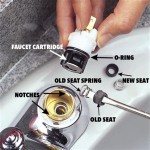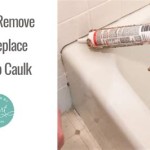Painting a Fiberglass Bathtub: A Comprehensive Guide
Fiberglass bathtubs, known for their lightweight nature and affordability, can often become worn, stained, or simply outdated in appearance. Rather than resorting to expensive replacement, painting offers a viable and cost-effective alternative to refresh the look of a fiberglass bathtub. This process, however, requires careful planning and execution to ensure a durable and aesthetically pleasing finish. This article provides a comprehensive guide to painting a fiberglass bathtub, covering essential steps, materials, and techniques.
Key Point 1: Preparing the Fiberglass Bathtub Surface
Surface preparation is arguably the most critical step in painting a fiberglass bathtub. A poorly prepared surface will inevitably lead to paint adhesion issues, resulting in peeling, chipping, and ultimately, a failed paint job. This stage involves meticulous cleaning, sanding, and addressing any existing damage to the fiberglass.
The initial step involves a thorough cleaning of the bathtub. Use a non-abrasive cleaner specifically designed for bathrooms to remove soap scum, mildew, and other surface contaminants. Avoid using harsh chemicals like bleach in undiluted form, as they can damage the fiberglass surface. Rinse the bathtub thoroughly with clean water and allow it to dry completely. Stubborn stains may require specialized cleaners designed to remove specific types of residue. If mildew is present, a mildew-killing solution should be applied, following the manufacturer's instructions carefully.
Once the bathtub is clean and dry, the sanding process begins. Sanding is crucial for creating a slightly roughened surface that the primer and paint can adhere to effectively. Use wet/dry sandpaper with a grit of around 320-400. Wet sanding is the preferred method, as it minimizes dust and helps to prevent the sandpaper from clogging. Dip the sandpaper in water frequently and gently sand the entire surface of the bathtub, paying particular attention to areas with existing damage or imperfections. The goal is not to remove the existing finish entirely, but rather to create a uniform surface texture that promotes adhesion.
After sanding, thoroughly rinse the bathtub with clean water to remove any remaining sanding dust. Inspect the surface carefully for any imperfections, such as cracks, chips, or gouges. These imperfections must be addressed before proceeding with the painting process. Use a fiberglass repair kit to fill in any cracks or chips, following the manufacturer's instructions carefully. Allow the repair compound to dry completely, and then sand it smooth with fine-grit sandpaper (400-600 grit) to blend it seamlessly with the surrounding surface.
The final step in surface preparation is to ensure the bathtub is completely dry and free of any dust or debris. Wipe down the entire surface with a tack cloth to remove any remaining particles. At this point, the bathtub is ready for priming.
Key Point 2: Selecting the Right Primer and Paint
Choosing the appropriate primer and paint is essential for achieving a durable and long-lasting finish on a fiberglass bathtub. Not all primers and paints are created equal, and selecting products specifically designed for use on fiberglass and in wet environments is crucial. This section explores the different types of primers and paints suitable for this application and provides guidance on making the right choices.
The primer serves as a critical bonding layer between the prepared fiberglass surface and the topcoat of paint. It promotes adhesion, seals the surface, and helps to create a uniform base for the paint. An epoxy-based primer is generally considered the best option for fiberglass bathtubs. Epoxy primers offer excellent adhesion, durability, and resistance to water and chemicals. They also provide a hard, smooth surface that is ideal for receiving the topcoat of paint. Alternatively, a specialized bonding primer designed for hard-to-adhere surfaces can also be used. Ensure that the chosen primer is compatible with the chosen topcoat paint.
For the topcoat paint, two primary options are commonly used: epoxy paint and two-part polyurethane paint. Epoxy paint is a popular choice due to its durability, chemical resistance, and ease of application. It provides a hard, glossy finish that is resistant to scratches, stains, and chipping. However, epoxy paint can be prone to yellowing over time, especially in areas exposed to sunlight. Two-part polyurethane paint offers superior durability, UV resistance, and a longer-lasting finish compared to epoxy paint. It is also more resistant to chemicals and abrasion. However, polyurethane paint can be more challenging to apply and requires careful mixing of the two components. It’s also important to select a paint specifically formulated for bathroom environments to resist moisture and mildew.
When selecting the color of the paint, consider the overall aesthetic of the bathroom and choose a color that complements the existing decor. White and neutral colors are popular choices for bathtubs, as they create a clean and bright look. However, darker colors can also be used to create a more dramatic effect. Ensure that the chosen paint is available in a sheen level that is appropriate for a bathtub. A high-gloss finish is typically recommended, as it is easier to clean and more resistant to water damage. However, a semi-gloss finish can also be used to reduce glare.
Before purchasing the primer and paint, carefully read the manufacturer's instructions and ensure that the products are compatible with each other and with the fiberglass surface. It is also advisable to purchase a small amount of paint and test it in an inconspicuous area of the bathtub to ensure that the color and finish are satisfactory.
Key Point 3: Application Techniques for a Professional Finish
Proper application techniques are crucial for achieving a smooth, even, and professional-looking finish on a fiberglass bathtub. This section outlines the steps involved in applying the primer and paint, including the necessary tools and techniques to avoid common pitfalls such as brushstrokes, drips, and uneven coverage. The ambient temperature also plays a role in application, influencing drying times and paint consistency.
Before beginning the application process, ensure that the work area is well-ventilated and protected. Cover surrounding surfaces with drop cloths or plastic sheeting to prevent paint splatters. Wear appropriate personal protective equipment (PPE), including a respirator, gloves, and eye protection. The use of a respirator is especially important when working with epoxy-based products, as they can release harmful fumes.
Begin by applying the primer in thin, even coats. Use a high-quality paintbrush or a foam roller specifically designed for use with epoxy-based products. Apply the primer in long, overlapping strokes, ensuring that the entire surface is coated evenly. Avoid applying the primer too thickly, as this can lead to runs and drips. Allow the primer to dry completely according to the manufacturer's instructions. This may take several hours or even overnight. Once the primer is dry, lightly sand it with fine-grit sandpaper (400-600 grit) to create a smooth surface for the topcoat of paint.
After sanding the primer, remove any sanding dust with a tack cloth. Then, apply the topcoat of paint in thin, even coats, using the same techniques as with the primer. Again, avoid applying the paint too thickly. Apply two or three coats of paint, allowing each coat to dry completely before applying the next. The number of coats required will depend on the color and opacity of the paint. Follow the manufacturer's recommended drying times between coats. If using a two-part polyurethane paint, be sure to mix the two components carefully according to the manufacturer's instructions. Improper mixing can result in a poor finish.
To minimize brushstrokes or roller marks, use a technique called "tipping off." After applying a section of paint, gently drag the tip of the brush or roller over the wet paint in a single, smooth motion. This will help to flatten out any imperfections and create a smoother finish. If drips or runs occur, immediately wipe them away with a clean cloth. Do not attempt to fix them after the paint has dried, as this will only create a more noticeable imperfection.
Once the final coat of paint has dried completely, carefully remove the masking tape and drop cloths. Inspect the painted surface for any imperfections and touch them up as needed. Allow the paint to cure completely before using the bathtub. The curing process can take several days or even a week, depending on the type of paint used. Avoid exposing the painted surface to water or chemicals during the curing process.
By following these steps and using the appropriate materials and techniques, it is possible to achieve a professional-looking finish that will revitalize a fiberglass bathtub and extend its lifespan. Remember that patience and attention to detail are key to a successful paint job.

How To Paint A Bathtub Yourself The Nifty Nester

How To Refinish Your Bathtub For 50

Diy Painted Bathtub Follow Up Your Questions Answered Addicted 2 Decorating

Can Plastic Acrylic Or Fiberglass Bathtubs Shower Stalls Be Reglazed Refinished America Refinishing Pros

How To Paint A Tub With Rustoleum What Not Do

Bathroom Makeover Day 11 How To Paint A Bathtub Addicted 2 Decorating

Painting A Fiberglass Bathtub What You Need To Know Hometalk

How To Paint Your Bathtub Yes Seriously Love Renovations

Painting A Tub Shower Fiberglass Using All In One Paint Color Cashmere

Painting A Fiberglass Bathtub What You Need To Know Hometalk








